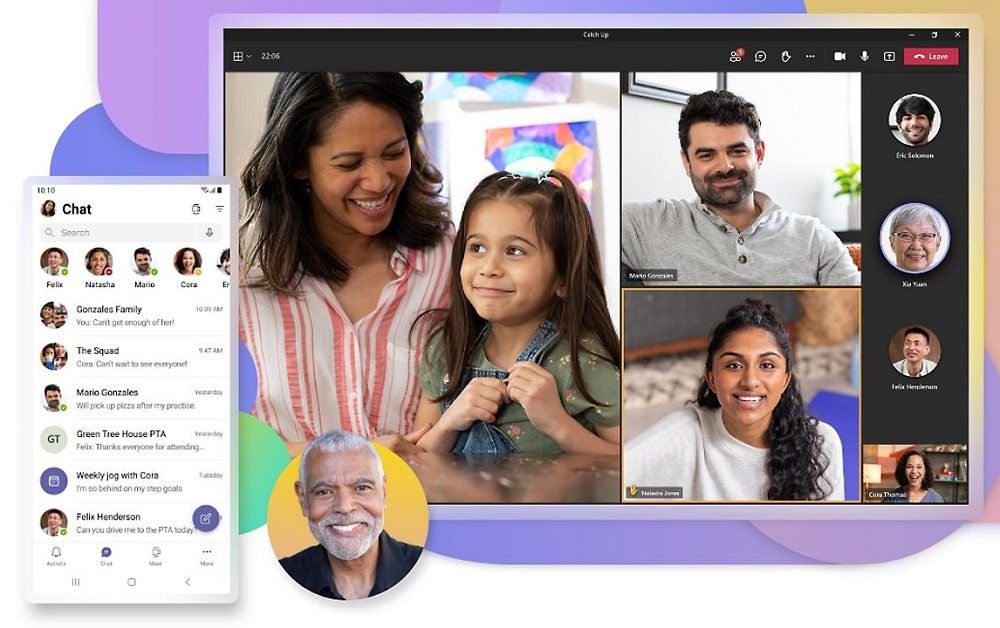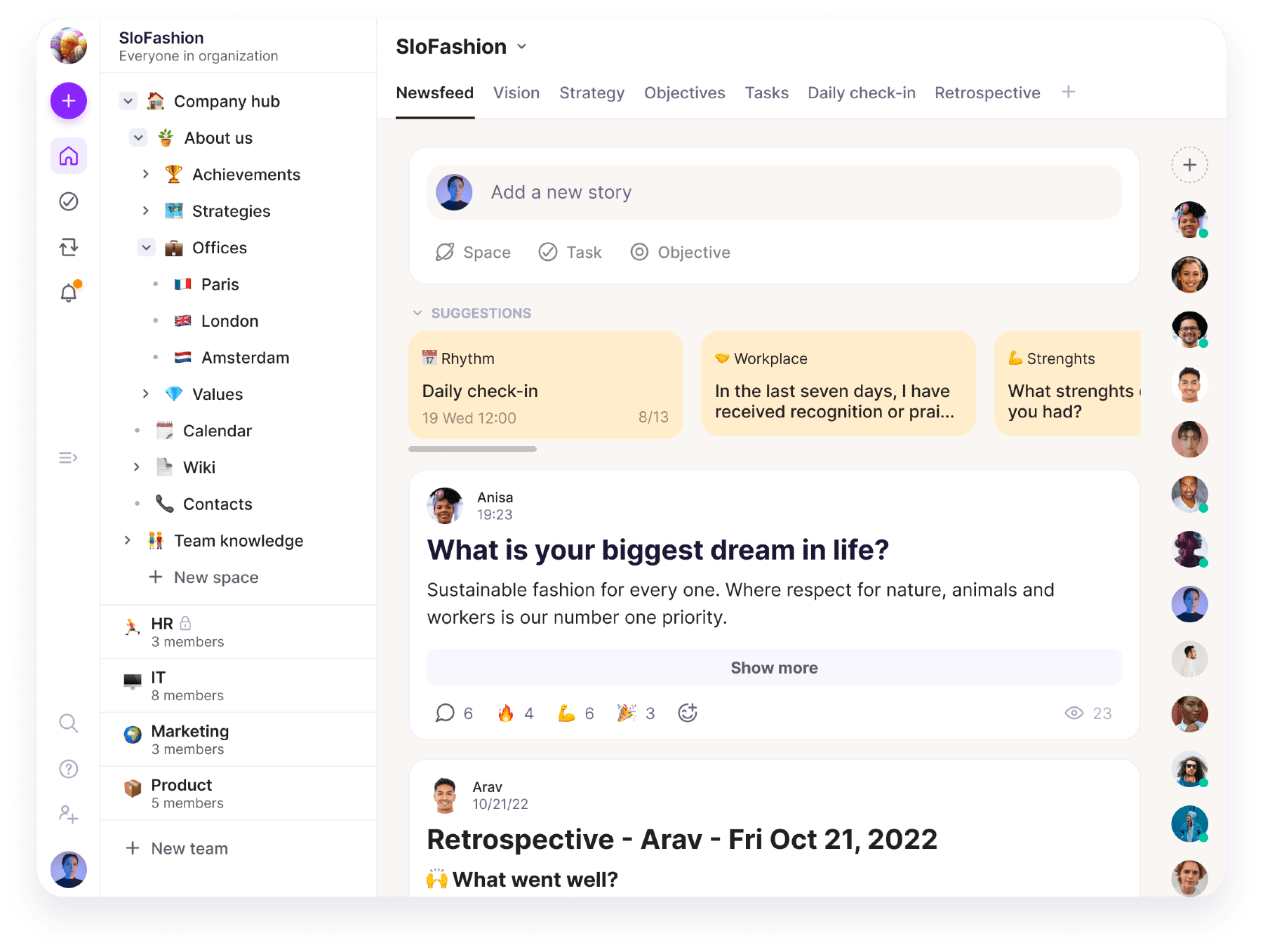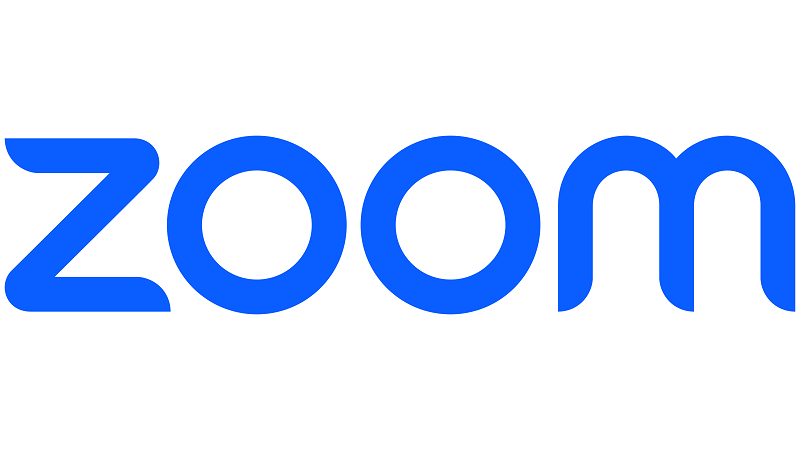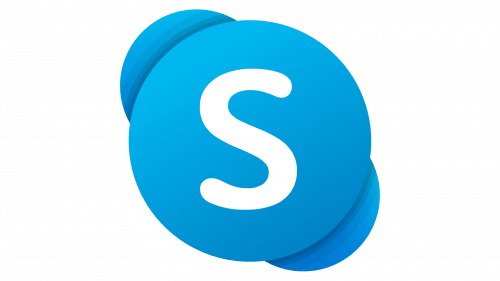

14 Best Microsoft Teams Alternatives to Upgrade Collab in 2024
📖 11 min read
Are you getting tired of Microsoft Teams and need a suitable user-friendly alternative? If your answer is yes, this article is for you. You’ve probably noticed that business communication platforms have become a critical part of everyone’s daily operations.
Such solutions provide key features and multiple communication channels for collaboration, video conferencing, and project management to allow guest users and participants to keep their conversations, audio messages, emails, notifications, documents, calendars, and tasks organized under a single platform.
Microsoft Teams is one of the leading cloud-based communication platforms for businesses that mobile and desktop users can utilize as a video conferencing tool. The tool provides independent workspaces with engaging features, such as real-time chat messaging, instant messaging, email integration, threaded real-time conversations, etc.
However, the Microsoft Teams tool only supports high integrations with the Microsoft ecosystem, making syncing it with a Teams alternative solution a bit tricky. In addition, some of Teams’ features come as upgrades and plugins, while you can find them as standard features with competitor software.
Because of that, business users turn to Teams’ competitors. If you recognize yourself in this, here are the best Teams alternatives and competitors to check out in 2024.
ALTERNATIVES
Best Microsoft Teams Alternatives in 2024
The best Teams alternative largely depends on your business communication and collaboration needs. Some companies need simple video calls, while others look for solutions for handling regular video meetings.
There’s a collaboration platform provider for every scenario – you can bet on that. Since many of Microsoft Team’s features can’t address your every business need, let’s discuss new players in town that can deliver where Teams fall short.
- Ayanza: Best for scaling your team collaboration needs
- Google Meet: Best for online meetings and audio/video conferencing
- Discord: Best for flexible video/voice calls and texting
- Spike: Best for real-time team collaboration via email
- Zoom: Best for regular cloud-based video conferencing meetings
- ClickUp: Best for team communication and project management
- Rocket Chat: Best for enabling collaboration between guest users
- Slack: Best for organizing conversations into channels
- Chanty: Best for task management and business communication
- Webex: Best for video conferencing security
- Google Workspace: Best for real-time team collaboration and communication
- Pumble: Best for real-time mobile and desktop communication
- Skype: Best for screen sharing and instant messaging
- Workplace: Best for Meta business communication
What is Microsoft Teams?

Microsoft Teams is a professional software solution for managing business communication, including video meetings, video calls, video meeting minutes, notifications, unlimited users, etc.
It’s one of the leading collaboration platforms geared toward real-time chat and video conferencing. It can integrate with other standard functionalities, such as calendars, emails, screen sharing, direct messaging, document sharing, and more.
The platform has a unified user interface and allows for a wide range of top-grade Microsoft add-ons, such as Stream, Outlook, and Office apps. As a video conferencing and team chat platform, Microsoft Teams enables business users such as yourself to send direct messages, start video calls, hold video meetings, share files, and make audio calls.
You can use it as a mobile workspace application to create as many independent workspaces as are needed, send different types of messages, tap into real-time conversations, check your conversation history, etc. Microsoft Teams provides many engaging features to make your business communication as simple as possible.
What is Microsoft Teams used for?
Since Microsoft Teams is part of the Office 365 suite. Businesses and individual users use the software as a collaboration platform to unify tasks like video and audio messaging, chat, instant messaging, and file sharing.
The COVID pandemic made Microsoft Teams increasingly popular among companies. The rise of remote teams posed new challenges for businesses that the Teams platform can tackle, such as keeping dispersed and remote teams connected and unified.
It allows in-house and virtual teams to communicate, collaborate, and share data. So, whether you need a solution for one-on-one conversations or group chats, Teams delivers.
You can set multiple channels for different discussions, include up to 250 participants in your video conferencing sessions, broadcast meetings to thousands of users, or tap into outbound calling – the options are pretty much endless.
How does Microsoft Teams work?
Microsoft Teams allows companies to communicate more effectively by providing multiple channels to break down extensive team conversations into smaller, sub-group sessions. This option allows you to use breakout rooms to brainstorm ideas and facilitate productive and effective communication.
You can turn an online meeting environment into a personalized video-enabled collaboration workspace where you have total control over who can join, make calls, share information, take notes, etc.
The platform gives you an intuitive, unified user interface to enable you to get ahead of your business communication, team coordination, and video conferencing needs. Additionally, Teams allows you to separate your communications into two channels – private and standard.
The latter is public and visible to everyone, making joining as straightforward as possible. The former allows you to limit access to sensitive conversations and keep communication private and limited to a specific group of people. Both channels support team collaboration, group conversations, video meetings, and more.
What makes Microsoft Teams unique compared to other alternatives?
At the moment, Microsoft Teams gathers over a quarter of a million users, according to BusinessofApps, and is one of the most popular corporate communication platforms worldwide.
Although it may have some drawbacks, which we’ll cover later on, hundreds of thousands of users trust Teams because it has one advantage over competitors that make the platform unique – deep integration with Office 365.
Teams offers native integrations for Microsoft 365, PowerPoint, Word, and more and is a free add-on for Microsoft 365 Business subscribers. As if this wasn’t enough, Microsoft Teams can do you one better – its user-friendly interface allows you to break down extensive conversations into smaller sub-groups to keep things running as smoothly as possible.
If you’re looking for a sophisticated, all-in-one solution for bundling your collaborative business needs into one platform, you should give Microsoft Teams a shot.
What are the drawbacks of using Microsoft Teams?
Although everything mentioned above sounds great, Microsoft Teams isn’t perfect.
On the contrary, it has several drawbacks you should keep in mind. First of all, the Teams platform isn’t the best option for hybrid environments or remote-only teams.
Although it supports team collaboration functionality, it doesn’t come with a critical team app to engage in a productive way. That’s because Teams doesn’t provide the functionality to engage and communicate with your team members outside its native messaging environment.
If creating an independent workspace where your teammates can connect and maintain regular communication with each other regardless of location is your primary goal, you may want to look into alternative solutions like Ayanza or Spike.
In addition, Teams is ideal for users that use software tools and apps outside the Microsoft ecosystem. Aside from a lack of engagement and limited functionality, Teams also covers around 30 private communication channels and 200 public channels.
If your enterprise works with many departments and needs a cross-team collaboration solution, Teams won’t fit the bill. You can’t invite guest users to join your sessions or set access permissions once you add someone.
Finally, Teams offers a very limited file-sharing functionality that doesn’t allow you to organize files shared in conversations. These are all good reasons to consider Teams alternatives.
Microsoft Teams customers:
Currently, more than 42,600 companies are using Microsoft Teams across numerous industries, such as marketing and advertising, construction, government administration, financial services, nonprofit organization management, education/higher education, healthcare, computer software, and IT.
Some of the biggest Microsoft Teams customers include Blackfriars Group, California State University – Stanislaus, Arkadin SAS, JJL, Johnson Control, SAP, McAfee, Toshiba, etc.
Microsoft Teams integrations and apps:
Microsoft Teams supports various apps and integrations, such as Slack, Google Calendar, Zapier Webhooks, Amazon Alexa, HubSport, Microsoft Outlook, Google Sheets, Gmail, Zapier Schedule, Typeform, Salesforce, and Spotify.
Microsoft Teams cost:
Microsoft Teams offers two pricing structures – for business and for home. Let’s look at the prices.
For business:
Microsoft Teams – Free
Essentials $4.00 per month per user
Microsoft 365 Business Basic – $6.00 per user per month
Microsoft 365 Business Standard – $12.50 per user per month
For home:
Microsoft Teams – Free
Microsoft 365 Personal – $6.99 per month
Microsoft 365 Family – $9.99 per month
Microsoft Teams reviews:
“Right now, our company uses Teams for daily operations, meetings, and training. We have several groups set up as different departments, each with their own channels set up as projects. Each channel allows multiple tabs, in which we insert OneNote, Word, Excel, and web links to increase efficiency. The chat and screen share function is utilized daily.”
– Matthew Smith, Safety and Project Manager, Century Exteriors, Inc
“Microsoft Teams is a great tool for keeping teams connected. It has a great chat feature that allows for instantly messaging colleagues. Microsoft Teams also has the ability to have team meetings with or without video to keep teams connected and on the same page.”
– Loren Piel, In-House Counsel, Kendall Auto Group
“Microsoft Teams is our main resource of collaboration, communication, and projects. It is used across the entire organization and it helps cut down on the number of applications we have to use. Everything is slowly being integrated into Teams so it is a one-stop-shop for everything we need.”
– Heather Robinette, MBA, Marketing Manager, Conexlink
When to choose an alternative over Microsoft Teams?
You should choose an alternative over Microsoft Teams when you start to feel that the platform’s disadvantages are affecting your organization. Whether you want to move your collaboration outside Microsoft to improve your organization or need alternative communication channels, Teams alternatives can deliver big time when Microsoft Teams falls short.
How to choose the best Microsoft Teams alternative
You’re thinking of using a Teams alternative, but you’re stuck because there are so many different options? Well, that’s normal. The internet is an abundant source of software solutions, and it’s easy to lose yourself in all the possibilities.
If you’ve already used Microsoft Teams and it doesn’t tick all your boxes, it’s time to look for an alternative solution. First, consider what you can and can’t do with Microsoft Teams.
Those strengths and weaknesses should help you determine the areas where Teams falls short. These insights should help you envision your needs and choose the best solution that can cater to those needs.
Additionally, you should opt for an easy-to-use alternative that offers a fine selection of integrations and features at affordable prices. Look for a cross-team platform with strong customer support and a flexible pricing structure. Most Teams alternatives offer free trials so you can test their services before you commit.
ALTERNATIVES
14 Top Alternatives to Microsoft Teams
Here’s a comprehensive list of the best Microsoft Teams alternatives and competitors that you should consider.
1.


🥇 Best for : Scaling your team collaboration needs.
💸 Free trial : Ayanza is free forever for up to 25 users.
🚀 Popular features : The advanced Ayanza AI project management capabilities can do wonders for your team collaboration and project management, the platform offers much more than that. You can scale your team collaboration according to your needs, keep teammates in check, manage team productivity, share advice to keep your workforce motivated, and manage your team however you see fit.
You get separate channels for addressing different tasks and managing the needs of your team members. And just when you thought things couldn’t get any better, Ayanza seals the deal with even more functionality.
Need an easy-to-use team collaboration platform ? You got it. Having trouble enhancing team productivity ? No worries, Ayanza task management AI comes to your rescue. Think of this multipurpose platform as your trustworthy partner that enables you to manage your business goals at any time of the day.
You get personal virtual space and the power of artificial intelligence in the palm of your hand. If you’ve always dreamed of unleashing your team’s full potential, your dream can finally come true with Ayanza.
Starting price : Getting started with Ayanza will cost you $6 per month for more than 25 users.
Integrations : Trello, Notion, Asana, GitHub, and Google Calendar.
Benefits of Ayanza compared to Microsoft Teams : Remember the Microsoft Teams drawbacks? Ayanza is the answer to those shortcomings, as it can address all the disadvantages of Microsoft Teams.
Ayanza is ideal for hybrid and remote teams. The platform supports integrations outside of the Microsoft ecosystem and offers multiple communication channels where you can create your personal digital workspaces with advanced, AI-powered collaboration and communication features.
In addition, Ayanza is a top-grade daily standup tool
for facilitating virtual daily meetings with your remote workforce anywhere, anytime.
Gather all your tasks under a single platform, add/remove users, track and record progress, share updates with your entire organization, manage individual team members, and take your team collaboration and project management to the next level.
Who should use Ayanza : In-house, remote, and hybrid teams, business users, company owners, executives, project managers, home users, etc.
Pros & Cons
| ✅ Pros | ❎ Cons |
|---|---|
| Easy to use multipurpose platform | No live chat |
| Advanced features for project management, team collaboration, and task alignment | No API integration |
| Multi-channel approach to task management and coordination | Support is English speaking only |
| 24/7 multi-channel customer support |
Favorable review : “With Ayanza I can quickly capture my ideas. I am confident that I don’t miss news from the team.”
– Ivan Trancik, SuperScale
2. Google Meet

🥇 Best for : Online meetings and audio/video conferencing
💸 Starting price : $6 per user per month
Benefits of Google Meet compared to Microsoft Teams: As a Teams alternative, Google Meet can do things Microsoft Teams can’t. Aside from being a more comprehensive video conferencing tool than Teams, Google Meet allows you to connect your team worldwide using a mobile phone or desktop device.
You can invite users to join meetings with a few taps, chat in real-time, share screens, and cater to your remote work needs like a professional. Google Meet can handle virtual meetings and audio/video calling and is ideal for Google users that use productivity tools such as Google Sheets, Docs, and Drive.
Pros & Cons
| ✅ Pros | ❎ Cons |
|---|---|
| Intuitive, user-friendly, and simple user interface | Limited collaboration features |
| Ideal for Gmail and Google Workspace users | Communication projects prone to bugs and shutdowns |
| Google integrations | Limited support options |
| Allows up to 500 users per meeting session | |
| Direct access from a web browser |
Favorable review : “Google Meet benefits our company by improving communication, collaboration, and productivity. We also use it to provide virtual customer support, helping to streamline the customer service process and improve the overall customer experience.”
– Lawrent
3. Discord

🥇 Best for: Flexible video/voice calls and texting
💸 Starting price: $2.99 per month
Benefits of Discord compared to Microsoft Teams: Discord gives you multiple communication channels and operates on a server, giving you a private virtual space where you can communicate with other users with video, text, or voice. Since there are access verification protocols set in place, you can secure your communication against cyber threats. Oh, and did we mention that it’s available for free?
Pros & Cons:
| ✅ Pros | ❎ Cons |
|---|---|
| Easy-to-use file-sharing system | Unresponsive customer support |
| Previews of shared screenshots, GIFs, and images | Limited selection of communication channels |
| Third-party app integrations | Notifications don’t work |
| Advanced security in shared workspaces | Spammy links |
| Discord is more suited for home use than for organizations |
Favorable review:“I use discord in my daily life whether it is for a small call with my friend or some big work. You can easily manage and discord. It comes with various functionalities like screen sharing, voice, and video calling, file sharing, instant messaging, etc. It saves a lot of time for me like I do not have to create a separate link each time anyone who is a member of that channel can join and leave. And also you can set restrictions.”
– Naveneet Singh N.
4. Spike

🥇 Best for: Real-time team collaboration via email
💸 Starting price: $5 per user per month
Benefits of Spike compared to Microsoft Teams: Spike is one of the biggest Microsoft Teams competitors for a very simple reason – the company offers email-focused collaborative features that Teams can only dream of.
Since Spike gears its functionality toward professional teams, you can tap into advanced video/audio conferencing features, file sharing, task management, note-taking, real-time conversations, and more via a customizable inbox-centered interface.
Pros & Cons
| ✅ Pros | ❎ Cons |
|---|---|
| Perfect for instant messaging and live chat | Freemium plan comes with limited options |
| Multiple calendar options | No email signature |
| Priority email inbox | No Linux app |
| Supports video meetings and voice messaging | |
| Collaborative group inbox | |
| To-do manager and task lists | |
| Top-grade file management system |
Favorable review:“Spike is great! When I couldn’t figure something out, I messaged them and they told me what to do right away! Spike always sends messages and isn’t like gmail where it takes a long time! I would consider having spike! Love it!”
– Ximena Cuevas
5. Zoom

🥇 Best for: Regular cloud-based video conferencing meetings
💸 Starting price: $14.99 per month per user
Benefits of Zoom compared to Microsoft Teams: Whether you want to stream presentations, webinars, and meetings or share screens with teammates to support collaboration and teamwork, Zoom can deliver all that and more. Although it shares the video conferencing functionality with Microsoft Teams, Zoom excels at providing advanced features, such as breakout rooms, virtual backgrounds, and top-class audio/video quality.
Pros & Cons
| ✅ Pros | ❎ Cons |
|---|---|
| Perfect for large enterprises and remote teams | Past security and data privacy issues |
| Social media streaming options | Limited collaboration options |
| Supports screen sharing | You need to pay a premium price to get advanced features |
| Top-grade audio/video conferencing quality | |
| Multiple virtual background templates |
Favorable review:“As remote working becomes a norm even after the pandemic, remote meeting platforms such as Zoom become important tools for our daily working. We use Zoom for our daily standup meetings and more.”
– Yong Wu
6. ClickUp

🥇 Best for: Team communication and project management
💸 Starting price: $5 per user per month
Benefits of ClickUp compared to Microsoft Teams: ClickUp comes into the picture when Microsoft Teams can’t deliver. Need a user-friendly solution for boosting your team productivity? ClickUp has you covered. Struggling with team collaboration? ClickUp comes to your rescue. It’s an excellent team communication and project management platform that can easily replace the tiresome Microsoft Teams suite.
Pros & Cons
| ✅ Pros | ❎ Cons |
|---|---|
| Offline/online interface modes | No option to export dashboards |
| Multi-view workspaces | Too many complex features |
| Customizable task management | Text size issues |
| Task automation | Requires a steep learning curve |
| Top integrations | |
| Freemium plan supports unlimited users | |
| Android/iOS mobile apps |
Favorable review:“I am a big fan of ClickUp. It has made my life so much easier. It helps me organize my time, tasks, and files; it enabled me to chat with my teammates, manage our HR and IT better; and work on marketing easily but at the end of the day, it helped me keep a rigorous pace that would not have been possible without it.”
– Ina M
.
7. Rocket Chat

🥇 Best for: Enabling collaboration between guest users
💸 Starting price: $3 per user per month
Benefits of Rocket Chat compared to Microsoft Teams: Rocket Chat can do everything that Microsoft Teams does, only better. As an open-source team communication platform, Rocket Chat offers robust audio/video communication options, including voice and video calls, screen sharing, direct messaging, engagement dashboards, and more.
Pros & Cons
| ✅ Pros | ❎ Cons |
|---|---|
| Extra verification and security measures | Cluttered user interface |
| MS translate option | Mobile apps need improvement |
| Supports internal/external communication | Mobile apps can’t display desktop notifications |
| Advanced conversation organization options | |
| Desktop, web, and mobile versions |
Favorable review:“Well, amazingly it’s free for personal and commercial use. On top of that it works very well, and you can even deploy in a docker, which means you can get it up fast. It has tons of functions that you can integrate to compete with the discord and slack. Tons. Also, you can integrate bots, which seems like the latest thing.”
– Adam N.
8. Slack

🥇 Best for: Organizing conversations into channels
💸 Starting price: $7.25 per user per month
Benefits of Slack compared to Microsoft Teams: If you want a chat-based platform with easy-to-use communication options, Slack is the best solution for you. It gives you everything you need to manage your daily team communication needs, including audio/video calls, external integrations, file-sharing, etc. You can even use it as you would use Microsoft Teams. It’s incredibly user-friendly and worth considering.
Pros & Cons
| ✅ Pros | ❎ Cons |
|---|---|
| Free version includes top features | No calendar management features |
| Supports an array of plugins and add-ons | You need additional subscriptions to use certain features |
| Multi-channel communication | Messy notifications |
| Simultaneous real-time team collaboration | Automatically deletes conversations after 14 days |
| Mobile and desktop versions | Limited storage capacity |
Favorable review:“We use Slack extensively for communication purposes. Slack acts as a collaboration hub within my department, for extensive group discussions between members of my department. In fact, it is the fastest way to get responses to most work-related queries from team members.”
– Ivanka
9. Chanty

🥇 Best for: Task management and business communication
💸 Starting price: $3 per user per month
Benefits of Chanty compared to Microsoft Teams: Chanty is a versatile communication and task management platform that enables business teams to unify their communication and stay focused on accomplishing tasks at hand. It can replace MS Teams in your organization without disturbing your daily workflow. In addition, it’s a widely used collaboration tool across multiple industries.
Pros & Cons
| ✅ Pros | ❎ Cons |
|---|---|
| All-in-one task management solution | No group chat option |
| Affordable premium subscriptions | Freemium plan offers limited functionality |
| All-encompassing freemium version | Free plan supports only 10 users |
| Easy to share files | |
| Numerous integrations | |
| iOS/Android mobile app | |
| User-friendly search engine |
Favorable review:“Probably, the most intuitive and easy-to-use chat for teams, valuing collaboration and effective communication. I am a huge fan of tasks features - it really helps to organize the workflow and save time.”
– Aysel S.
10. Webex

🥇 Best for : Video conferencing security
💸 Starting price : $14.95 per user per month
Benefits of Webex compared to Microsoft Teams: Webex or Cisco Teams exists to bridge the gaps that Microsoft Teams has left in its wake. While it may seem like a simple team chat app, Webex is an ultra-secure video conferencing that can take your team collaboration to the next level without breaking a sweat.
The platform gives you multiple options for hosting meetings and enables you to transcript your conferencing sessions. However, Webex shines when it comes to hosting video conferences with up to 100,000 participants and an unlimited number of hosts.
Pros & Cons
| ✅ Pros | ❎ Cons |
|---|---|
| Hold video meetings across mobile, desktop, and web browsers | Not enough integrations compared to other solutions |
| Organize personal and public chats | Free plan doesn’t include support via phone/chat |
| MS Calendars and Google integrations | You can’t record meetings with the freemium version |
| Meeting recording option | |
| File and screen sharing |
Favorable review:“I quite liked it. It is very easy to start a conference. It also has a waiting room for participants who can tell that they are already inside so that the organizer can start the conference. Meeting scheduling is very useful, and easily integrates with calendars like Outlook.”
– Oscar A.
11. Google Workspace

🥇 Best for: Real-time team collaboration and communication
💸 Starting price: $6 per user per month
Benefits of Google Workspace compared to Microsoft Teams: If you’ve been looking for a way out of the narrow MS ecosystem and are an active Google user, Google Workspace is the solution to all your problems.
It has anything and everything you could ever ask for in a cloud-based collaboration platform. In addition, it offers an array of collaboration and communication tools, such as Google Calendar, Docs, Meet, Chat, Gmail, etc.
Pros & Cons
| ✅ Pros | ❎ Cons |
|---|---|
| Supports third-party integrations | Can’t function as an intranet |
| Provides user guidelines | Importing files from external services needs improvement |
| Perfect for home and business use | |
| Enables cloud sharing | |
| Offers a wide range of Google apps and programs |
Favorable review:“I use it on adaily basisfor myself and my clients, I also use it for my own business purposes. It is primarily used as a secure business email solution and cloud storage. I find it preferable and more secure than the other app, and easier to manage.”
– Mark T.
12. Pumble

🥇 Best for: Real-time mobile and desktop communication
💸 Starting price: $1.99 per user per month
Benefits of Pumble compared to Microsoft Teams: Since Pumble comes with web, Android, iOs, Linux, Windows, and Mac apps, it allows you to accomplish an omnichannel business communication experience in real-time.
You won’t have to rely on email so much in your daily communication. On top of that, Pumble is ridiculously affordable. Need to stay connected with your team? No problem, Pumble steals the show right under the MS Teams’ nose.
Pros & Cons
| ✅ Pros | ❎ Cons |
|---|---|
| Forever free plan available | No third-party integrations |
| Private/public communication channels | Channel permissions require a premium plan |
| Supports threaded conversations | |
| Unlimited storage options with premium plans | |
| Channel permissions available for extra security |
Favorable review:“It is the best app to communicate with the team working with a big force. I am talking about the ease and rapid response here. When my organization introduced Pumble we were like wow and we learned using Pumble from day one it gets on board it’s that easy.”
– Krishna S.
13. Skype

🥇 Best for: Screen sharing and instant messaging
💸 Starting price: Free forever
Benefits of Skype compared to Microsoft Teams: Skype can pretty much do everything that Microsoft Teams does but for free. Although it may not offer as many customer support or security features as MS Teams, it can handle your business communication and collaboration needs without breaking your budget.
Pros & Cons
| ✅ Pros | ❎ Cons |
|---|---|
| * Completely free | * Limited customer support |
| * Simple user interface | * Limited cloud storage per user |
| * Top communication and security features | * No live streaming |
| * Knowledge base available | * You can’t invite more than 100 participants |
| * Data encryption |
Favorable review:“What I love the most with Skype is they give you the chance to pick a phone number with your local area code. You can also choose from any other region in the country. The assigned phone number will perform just like any regular phone number would. You can pick up calls and respond to texts without an issue.”
- Esther M.
14. Workplace

🥇 Best for: Meta business communication
💸 Starting price: $4 per user per month
Benefits of Workplace compared to Microsoft Teams: Workplace allows you to organize your business communication in a social media-like manner.
Think of it as your personal Facebook for work. It brings you all the features of the largest social media network in the world without a learning curve. You can tap into the features such as news feed, feedback, comments, video, and voice calls – you name it, Workplace has it.
Pros & Cons
| ✅ Pros | ❎ Cons |
|---|---|
| Supports the exchange of files, audio messages, and text | Notification structure not fit for work |
| HD video/voice calls available | Limited integrations |
| You can create surveys and polls | |
| Perfect for external collaboration | |
| Live video streaming |
Favorable review:“Truly speaking, Workplace by Facebook is a professional version empowering people to construct a team and achieve everything through internal communication.”
– Etta R.
Why teams choose Ayanza as their Microsoft Teams alternative
| Ayanza | Microsoft Teams |
|---|---|
| User-friendly interface | Hard-to-use platform |
| AI-powered brainstorming and knowledge base | Users have to deal with complex databases |
| Comprehensive features support your team collaboration needs | Too many features may feel overwhelming for new users |
| Multiple ways to organize your exterior ongoing tasks | Keeps you limited to MS ecosystem |
| Free for up to 25 users | Certain features require a premium plan |
Compared to MS Teams, Ayanza gives you the advantage of brainstorming your ideas for you. It lends you the power of AI to manage your teams across multiple communication channels.
You can keep all your project management and collaboration needs in a single place and use a vast Ayanza knowledge base to fuel your pipeline with the latest company news, events, and more.
Conclusion
Although MS Teams may seem like the perfect collaboration tool for your business, looks can be deceiving. Thankfully, you have a wide range of industry-standard Teams alternatives, such as Ayanza, at your disposal.
These alternative solutions can bridge the MS Teams’ shortcomings and help you manage your team collaboration, business communication, and project management needs. If you’re ready to step outside the enchanted Microsoft circle and embrace a larger view, start with the Teams alternatives mentioned here.
FAQ
Is Microsoft Teams used for project management?
Yes, you can use MS Teams for project management, document management, video meetings, real-time chat, and more.
How do you use Microsoft Teams in project management?
Although MS Teams isn’t a specialized project management tool, it allows you to handle certain aspects of project management, such as reporting, resource management, risk identification, task tracking, file sharing, video calling, etc.
Is Microsoft Teams still popular?
In 2022, MS Teams gathered more than 270 million users. So, yes, it’s still one of the leading solutions in the market.
What is Microsoft Teams best used for?
The MS Teams tool is best used for real-time collaboration and bringing all your tasks under a single communication platform.
Does Google have a Microsoft Teams equivalent?
Yes, Google Meet is one of the biggest MS Teams competitors.
What are some limitations of Microsoft Teams?
The biggest MS Teams drawback is that it limits you to a closed MS ecosystem. The tool comes with a limited number of communication channels and file-sharing options.
What features to look out for in Microsoft Teams alternatives?
Look for solutions that can handle file organizations, provide flexible permission options, multiple channels, and generous freemium plans.
What is the best Microsoft Teams alternative for small businesses?
Solutions like Ayanza are the best fit for small teams. The Ayanza platform equips your team with all the necessary features for organizing and managing daily tasks and staying connected.
What is the best Microsoft Teams alternative for large organizations?
Zoom, Webex, and Google Workspace are the best Teams alternatives for enterprises.
Can I add non-Microsoft users to use Teams?
You can add users outside your organization to MS Teams and give them access to your communication channels.
Can I use Microsoft Teams without video?
If you don’t need video in your meeting channels, there’s an option to turn it off. However, you can only do it once the meeting starts.

